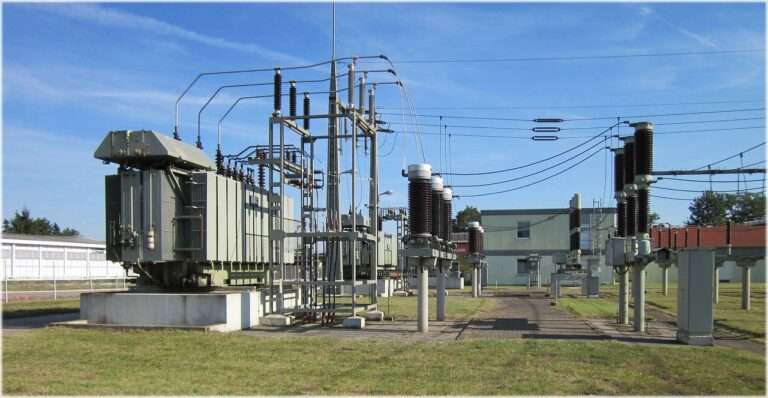Circuit Breaker Analyzer Testing Equipment: Best Guide
Circuit breakers are essential components in electrical systems, designed to protect equipment and maintain operational safety by interrupting fault currents. Ensuring their reliability and performance is critical, and this is where circuit breaker analyzer testing equipment plays a pivotal role. This specialized testing equipment evaluates the performance of circuit breakers by analyzing key parameters such as timing, contact resistance, motion, and insulation strength.
In this article, we will dive into the technical aspects of circuit breaker analyzer testing equipment, its features, functions, and the benefits it brings to electrical system maintenance. For more insights into related topics like Circuit Breaker Testing Methods or Circuit Breaker Testing Requirements, explore our additional resources.

What is Circuit Breaker Analyzer Testing Equipment?
Circuit breaker analyzer testing equipment is a diagnostic tool used to assess the operational condition of circuit breakers. It ensures that the breakers function optimally, reducing the risk of failures during critical fault conditions. These devices are designed to perform comprehensive testing, including timing analysis, dynamic contact resistance measurement (DCRM), and motion analysis.
The equipment helps maintenance personnel verify:
- The mechanical and electrical integrity of circuit breakers.
- Their ability to trip during faults.
- Performance under different operational conditions.
Why is Circuit Breaker Testing Important?
Circuit breakers act as the first line of defense in electrical systems. Their failure can result in equipment damage, system downtime, or safety hazards. Testing ensures that:
- The breaker operates within specified time limits.
- Electrical contacts have minimal resistance.
- Insulation remains robust to prevent arcing or flashovers.
For a detailed understanding of how to test breakers, check out our guide on the Circuit Breaker Testing Procedure.
Key Features of Circuit Breaker Analyzer Testing Equipment
Circuit breaker analyzer testing equipment is equipped with advanced features to provide precise and reliable data. These features include:
Timing Analysis
Measures the time taken for the breaker to open and close.
Verifies that operation meets manufacturer specifications.
Dynamic Contact Resistance Measurement (DCRM)
Tracks contact resistance during breaker motion.
Identifies wear and tear on breaker contacts.
Motion Analysis
Monitors the breaker’s moving parts.
Provides data on contact travel, velocity, and over-travel.
Coil Current Measurement
Analyzes the current profile of the breaker’s trip and close coils.
Identifies coil-related issues such as overheating or coil burnout.
Static Contact Resistance Testing
Measures the resistance of stationary contacts to ensure efficient current flow.
Dual-Channel Recording
Simultaneously records operations of multiple poles.
Useful for multi-pole circuit breakers.
Types of Tests Conducted by Circuit Breaker Analyzer
Circuit breaker analyzer testing equipment supports various tests to evaluate performance. Some common tests include:
- Close and Open Timing Test
- Measures the time required for the breaker to close and open.
- Contact Resistance Test
- Determines the resistance of the breaker contacts when closed.
- Minimum Trip Voltage Test
- Checks the lowest voltage required to trip the breaker.
- Insulation Resistance Test
- Verifies the dielectric strength of the breaker insulation.
- Reclosing Time Test
- Measures the time taken for the breaker to reclose after tripping.
- Synchronism Test
- Assesses the timing synchronization between poles in a multi-pole breaker.
How Does Circuit Breaker Analyzer Testing Equipment Work?
Circuit breaker analyzer testing equipment connects to the circuit breaker via test cables. The equipment sends electrical signals to simulate breaker operation and records the response. Below is a general step-by-step process:
- Connection Setup
- Attach test leads to breaker terminals and control circuits.
- Configuration
- Input breaker specifications such as type, voltage rating, and timing limits.
- Initiate Testing
- Perform automated or manual tests for timing, resistance, and motion.
- Data Recording
- The equipment records test results and generates detailed reports.
- Analysis
- Results are analyzed to identify anomalies, degradation, or failure risks.
Benefits of Using Circuit Breaker Analyzer Testing Equipment
Using circuit breaker analyzer testing equipment offers several benefits for maintenance and reliability teams:
- Improved Reliability
Regular testing ensures that circuit breakers remain operational during fault conditions. - Enhanced Safety
Identifies potential issues before they escalate into critical failures. - Cost Savings
Prevents expensive downtime and damage to other equipment. - Data-Driven Decisions
Provides accurate data for planning repairs or replacements. - Compliance with Standards
Ensures compliance with industry regulations such as IEC 62271 and IEEE C37.
For a list of leading service providers in this domain, refer to Top Circuit Breaker Testing Companies in USA.
Key Parameters to Evaluate in Circuit Breaker Testing
When using a circuit breaker analyzer, the following parameters are typically evaluated:
- Timing
- Open and close times.
- Total operation time.
- Contact Resistance
- Static and dynamic resistance values.
- Motion
- Contact travel distance.
- Velocity and acceleration.
- Coil Performance
- Trip and close coil current profiles.
- Insulation Resistance
- Dielectric strength between contacts and ground.
Best Practices for Circuit Breaker Testing
To ensure effective testing, follow these best practices:
- Schedule Regular Maintenance
Perform routine tests to detect early signs of wear or failure. - Follow Manufacturer Guidelines
Adhere to the circuit breaker manufacturer’s testing specifications. - Use Certified Equipment
Ensure the analyzer complies with industry standards for accuracy and safety. - Train Personnel
Provide training on operating testing equipment and interpreting results.
Popular Circuit Breaker Analyzer Testing Equipment Brands
Several reputable manufacturers provide high-quality circuit breaker analyzer testing equipment:
- OMICRON
- Known for versatile and portable analyzers with advanced features.
- Megger
- Offers durable equipment with user-friendly interfaces.
- Doble Engineering
- Provides comprehensive solutions for breaker testing and diagnostics.
- ISA Test Instruments
- Specializes in lightweight analyzers with high precision.
- Vanguard Instruments
- Features robust analyzers designed for field and lab testing.
For miniature circuit breaker-related insights, don’t forget to explore Miniature Circuit Breakers.
Conclusion
Circuit breaker analyzer testing equipment is an indispensable tool for ensuring the reliability, safety, and efficiency of electrical systems. By conducting detailed tests such as timing analysis, contact resistance measurement, and motion analysis, these devices help maintenance teams identify potential issues before they lead to failures.
Investing in high-quality circuit breaker analyzer testing equipment and following best practices can significantly enhance the performance of your electrical infrastructure. Make sure to choose equipment from trusted brands and provide adequate training for personnel to maximize the benefits.
By regularly testing circuit breakers, you ensure the uninterrupted operation of your electrical systems and protect valuable equipment from damage.
Subscribe our Newsletter to get the latest updates in Electrical Engineering.
#CircuitBreaker, #TestingEquipment, #ElectricalTesting, #CircuitBreakerAnalyzer, #ElectricalEngineering, #PowerSystemTesting, #SwitchgearTesting, #HighVoltageTesting, #ElectricalMaintenance, #CircuitBreakerTesting, #ElectricalSafety, #TestingInstruments, #BreakerAnalyzer, #ElectricalEquipment, #PowerSystemAnalysis






